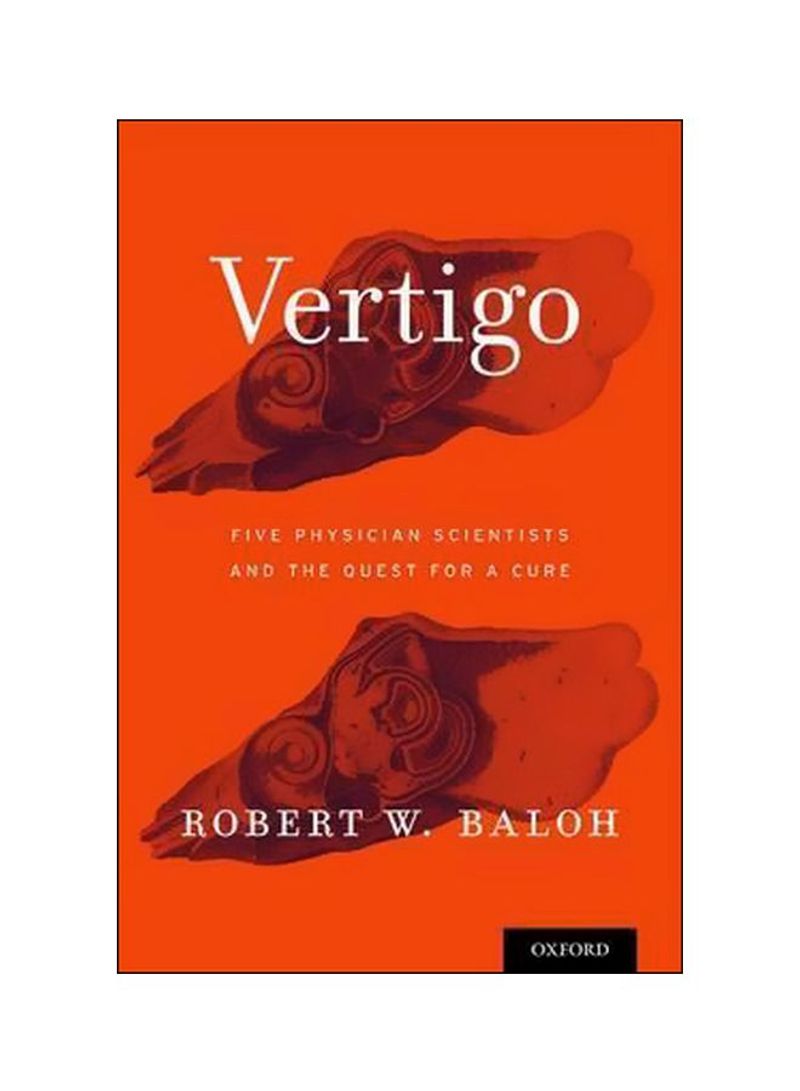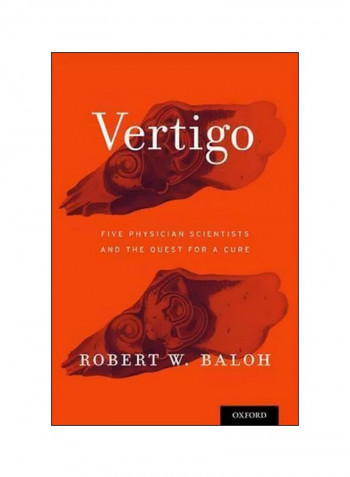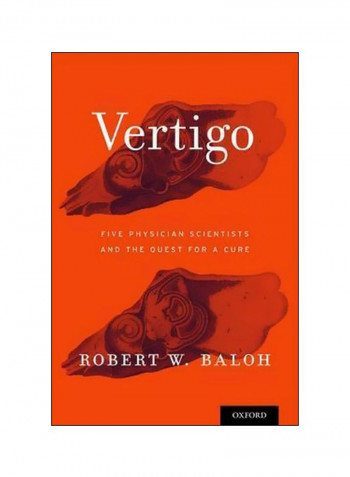Vertigo: Five Physician Scientists And The Quest For A Cure Hardcover
Recommend
Sort by
Rating
Date
Specifications
Author 1
Robert W. Baloh
Book Description
Benign paroxysmal positional vertigo (BPPV), the most common cause of vertigo, affects one in five people at some point during their lifetime, triggering the sudden feeling like one is moving or spinning when perfectly still. Early pieces of this medical puzzle appeared in the early 19th century in studies of the inner ear, yet the cause and cure for BPPV was not clearly understood until the late 20th century and it took a few more decades before this simple cure was accepted. Vertigo: Five Physician Scientists and the Quest for a Cure follows this centuries long trek. The book follows the key discoveries made by Prosper Meniere (1799-1862) who first recognized that vertigo could originate from the inner ear, Josef Breuer (1842-1925) who conducted groundbreaking research on the inner ear during his evenings at home after he spent his days working in a busy private medical practice, Robert Barany (1876-1936) who received the Nobel Prize for his early work on the inner ear, Charles Hallpike (1900-1979) who showed that BPPV originates from the inner ear, and Harold Schuknecht (1917-1996) who provided key observations on the mechanism of BPPV. Dr. Robert W. Baloh spins together a fascinating history using detailed interviews from those close to the key investigators and historical documents previously unavailable in the English language to provide a historical approach to understanding the vestibular system and with it a better understanding of vertigo itself.
Language
English
Publisher
Oxford University Press Inc
Publication Date
6 January 2017
Number of Pages
256
About the Author
Robert W. Baloh, MD is a professor of Neurology and Head and Neck Surgery at UCLA who has written more than 300 research articles and several textbooks focusing on the vestibular system. His interest in the history of Neurotology dates back to a series of conversations with Raphael Lorente de No in the early 1970s.
Editorial Review
I read this book from cover to cover and found it engaging, enlightening and inspiring. It has many revealing vignettes about the personal lives of the giants in neuro-otology whose eponymous names we all recognize. Bob Baloh's story illustrates how science, and especially medicine, moves forwards, sideways, backwards and then often belatedly, forwards again. And the book points out, as always, the human failings of even our most brilliant scientific heroes; jealousy, selective memory, and an unwillingness to give up one's own theories in the face of incontrovertible opposing evidence. Lessons for us all. -David S. Zee, MD, Professor, Neuro-Visual & Vestibular Division, Departments of Neurology, Ophthalmology, Otolaryngology-Head and Neck Surgery, and Neuroscience, The Johns Hopkins Hospital, Baltimore, MD "A riveting account by one of the giants in the field, of how clinician-scientists, have managed over the last century to unravel the secrets of the 6th sense, the sense of motion and to apply their findings to the treatment of balance disorders to give relief to those suffering from terrifying vertigo attacks. Full of fascinating information for both patients and professionals - a must read." -Michael Halmagyi, BSC, MBBS, MD, Royal Prince Alfred Hospital, Sydney, Australia "A fascinating story of scientific discovery. Mysterious and disabling spinning sensations, psychoanalysis, pigeons, the Nobel prize, imprisonment in Russia, exile to Sweden, bouncing eyes, ear stones, and a simple but elusive cure. Dr. Baloh, a giant in the field himself, tells the story like no one else could." -Kevin Kerber, MD, Department of Neurology, University of Michigan, Ann Arbor, MI "The sense of balance was one of the first sensory systems to emerge in evolution, but it was also the last to be discovered. In his remarkable book Vertigo - Five Physician Scientists and the Quest for a Cure Robert W. Baloh transports the reader back to the early days of vestibular discoveries, exemplified by five eminent figures in the history of neurotology. Dr. Baloh brings to life the colourful personalities that deepened our understanding of the balance system and paved the way for current vestibular diagnostics and treatment. This meticulously researched book, written by an eminent specialist in the field, will make a significant contribution to the history of vestibular science." -Gerald Wiest, MD, Professor of Neurology, Medical University Vienna, Vienna, Austria



